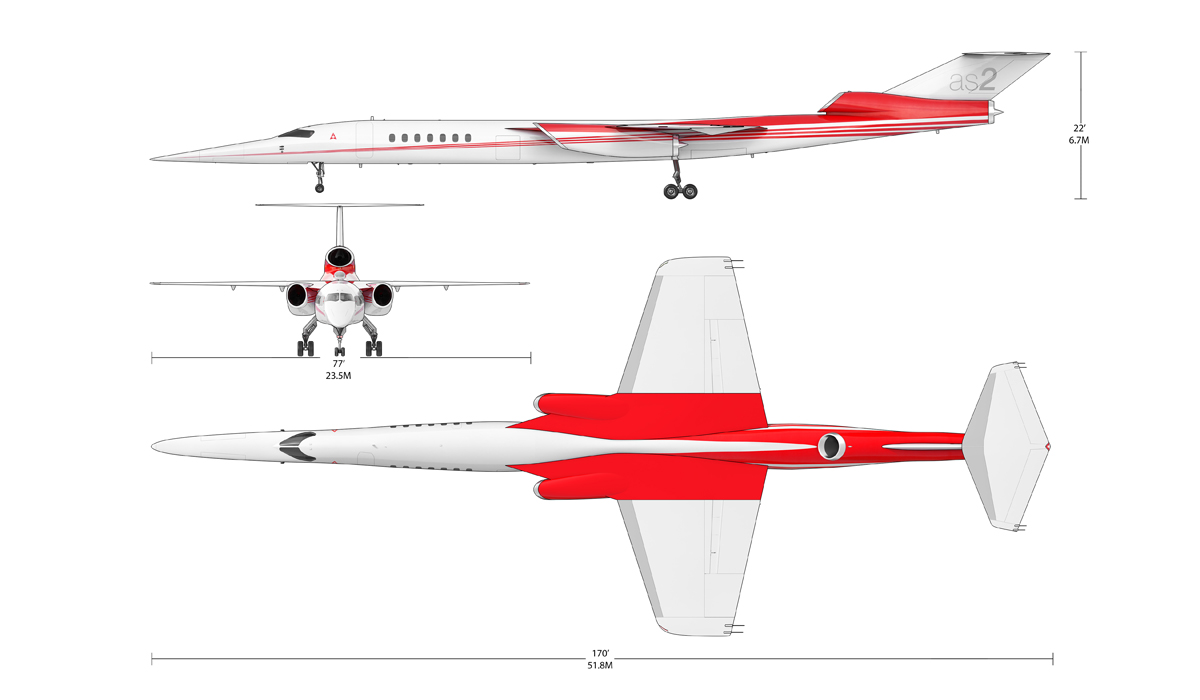Aerion has released a configuration of the first civil supersonic jet engine since the Bristol Siddeley Olympus.
The engine under study by GE Aviation is the final, and perhaps most critical, piece of Aerion’s 15-year-old quest to revive supersonic travel from the ashes of the retired BAC/Aérospatiale Concorde, but still introduces a new challenge that the would-be manufacturer's designers must overcome.
Aerion's concept for the AS2 supersonic trijet assumes no changes in the regulations that ban supersonic travel overland, so the challenge is to design a supersonic engine that meets new noise regulations that will take effect before its scheduled entry into service in 2025.
Such performance criteria are naturally in conflict. Supersonic speed demands a lower bypass ratio than found on a modern subsonic civil aircraft, but new Stage 5 noise regulations adopted by the US Federal Aviation Administration on 1 January for aircraft over 54,400kg (120,000lb) require the noise dampening provided by a higher bypass ratio.
Even if Aerion can keep the weight below that threshold, the same regulations begin applying to jet transport aircraft under 54,400kg in 2021.

Aerion
The GE engine cross-section – first displayed publicly on 15 February by Aerion chief executive Brian Barents – takes a systems-level approach to solving that problem, he says.
GE has not officially identified the source of the engine’s high-pressure compressor, but Barents confirms that it is derived from the eight-stage compressor and single-stage high-pressure turbine of the subsonic CFM56. GE matches that high-pressure section to a new low-pressure module optimised for supersonic speed.
The CFM56 has a 155-173cm (61-68.3in)-diameter inlet fan, allowing a 6:1 ratio of air bypassing the inlet to the engine core. By contrast, each of GE's engines for the AS2 trijet will feature a nearly 133cm-diameter fan, Barents says.
Bypass ratio is a metric often associated with fuel economy, but it also has a dampening effect on noise. The cool air stream flowing around the core acts as a natural muffler for the shrieking jet of super-heated air blasted from the aft engine nozzle.
At the same time, a lower bypass ratio makes it possible for a supersonic engine to function at the relatively high altitudes where the AS2 will usually cruise at Mach 1.4, Barents says.
The answer to the noise problem, however, is simple: the pilot will not use the full amount of thrust available from the engines on take-off, Barents says. By avoiding a full-throttle take-off, the AS2 will be able to meet Chapter 5 regulations for community noise, he says.
The solution does not come without trade-offs, however. Using less throttle will require the AS2 to use a longer runway or carry a smaller payload. Barents acknowledges the impact on the AS2's balanced field take-off length, but says the compromise is acceptable.

Aerion
With that problem solved, Aerion can move on to finalising plans to formally launch the AS2 with Lockheed Martin and GE as partners by the end of the year.
In December, Lockheed and GE announced they were joining Aerion's evaluation team for the AS2. GE kicked off a year-long configuration study for an engine based on the CFM56. Lockheed's Skunk Works, meanwhile, launched an evaluation of options for producing the AS2 in the USA, with the company's Marietta, Georgia factory on top of the list of candidates for the final assembly site. Those studies remain ongoing, Barents says.
The estimated $120 million AS2 jet is designed to accommodate 8-12 passengers on flights up to 5,400nm (9,990km), including 4,200nm at a high-speed cruise of M1.4.
The AS2 emerged in 2014 after Aerion shelved an earlier concept based on low-bypass Pratt & Whitney JT8D engines, with a commitment from fractional ownership company, Flexjet to order 20 aircraft.

Aerion
The AS2 now faces competition in the civil supersonic field. Colorado-based Boom Technology has received commitments from five airlines, including Virgin and Japan Airlines, for up to 76 aircraft with 55 seats in an all-business-class configuration.
Although the AS2 will emerge as a business jet, Aerion has plans to develop a family of aircraft, including airline-sized, supersonic aircraft, Barents says.
Source: Flight International






















